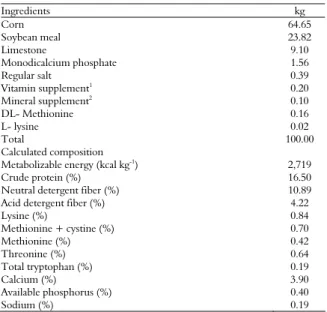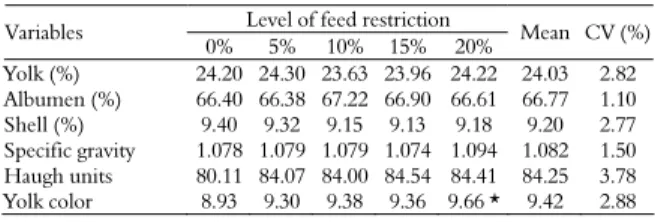Effect of feed restriction with voluntary hay intake on the performance and quality of laying hen eggs
Texto
Imagem




Documentos relacionados
Table 3 - Feed intake, body weight, weight gain, feed conversion ratio (FCR), and water intake of 14- to 21-old female broilers submitted or not to water restriction and
Grit-fed birds consumed less amounts of energy and protein, but had better growth performance than control birds with respect to body weight, body gain, feed intake,
ABSTRACT - This experiment was carried out to evaluate the effect of feed restriction on internal organs with respect to their weight and size, and the development of the
A comprehensive consideration of the data and the results presented in this study showed that performance parameters, such as body weight, feed intake, and egg
O presente trabalho teve como objetivos principais: verificar a prevalência de incapacidade funcional IFpara as atividades básicas da vida diária ABVD eos fatores associados Estudo
It was possible to evaluate the effect of continuous and intermittent lighting programs with different photophases on the performance and eggs quality of laying hens, applied to the
Mean values and standard error of the mean (SEM) for the characteristics of food and nutrient intake in relation to metabolic weight, performance and feed efficiency of lambs fed
There were no significant ( p >0.05) differences on hen day egg production, egg weight, egg mass, unmarketable eggs, feed intake, feed conversion efficiency (FCR), and live